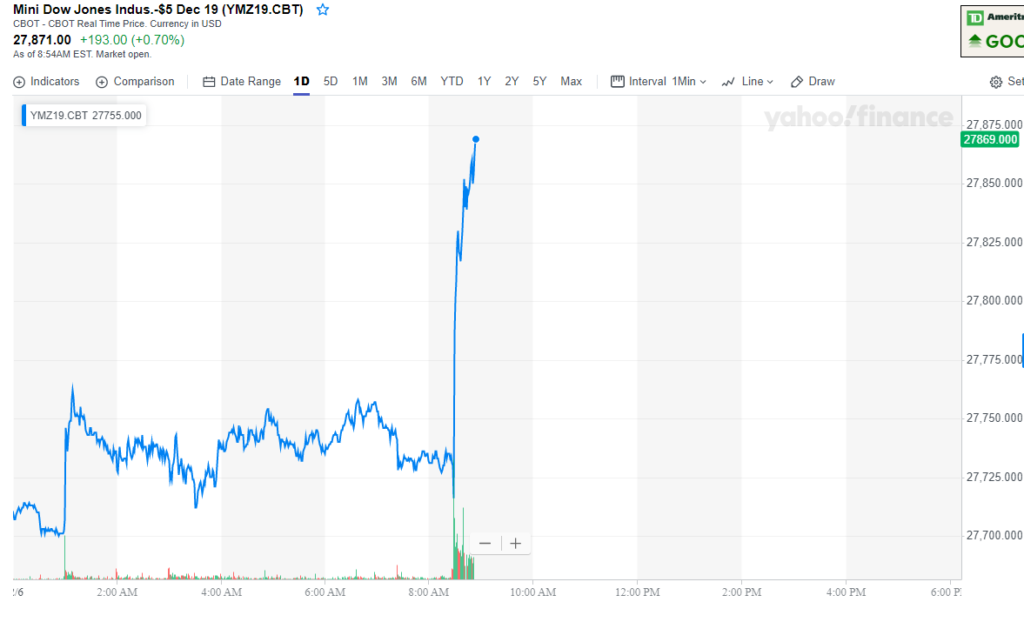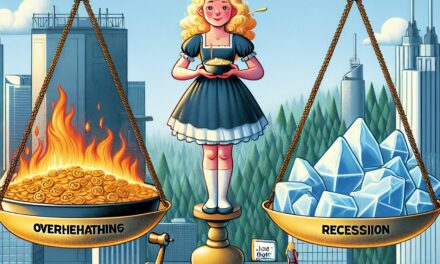Futures across the three major indexes spiked this morning on a massive new jobs report as U.S. employers shrugged off global trade tensions to add 266,000 new jobs with unemployment falling to 3.5% in November, the lowest number in a half-century.
Economists polled by Dow Jones had projected 187,000 new jobs, so the actual numbers for November, the best month since January, sent Dow futures up 186 points, or 0.7%, by 9 a.m. EST, with the S&P 500 rising 0.7% and the Nasdaq rising 0.8%.

The return to work of GM employees helped fuel the massive jobs report, boosting employment in motor vehicles by 41,300, part of an overall gain of 54,000 in manufacturing. Job growth has accelerated since the summer, averaging about 205,000 over the past three months compared to just 135,000 in July.
Renewed concerns over President Donald Trump’s trade conflicts sent the markets sinking earlier this week after he said he was willing to potentially wait until after the 2020 election to get a deal done. Trump is close to slapping 15% in additional tariffs on $160 billion worth of Chinese imports on Dec. 15, though both sides have said they are making progress to get “Phase 1” of a deal done.
Hiring has remained strong despite the trade war between the world’s two largest economies. However, the China trade war along with retaliatory tariffs from Europe have stalled job growth in manufacturing, which has seen four straight months of contraction.
One factor economists have pointed to is the holiday shopping season essentially began one week later this year compared to the previous year, delaying hiring by retailers and shipping firms for the month of November.
That is potentially a reason for Moody’s Chief Economist Mark Zandi claiming there was trouble brewing in the jobs market after a private survey by ADP showed just 67,000 jobs were added for November.
“The job market is losing its shine,” Zandi told CNBC just two days ago. “Manufacturers, commodity producers and retailers are shedding jobs. Job openings are declining, and if job growth slows any further unemployment will increase.”
So much for that.
The job market this year has had two stark differences in the economy: Service industries like finance, engineering and health care have seen solid job growth while manufacturers, miners and builders have posted weak numbers.
Analysts remain positive about the state of the economy and job market, though projections put the gross domestic product between 1.5% and 2% for the October-December quarter, down from 2.1% for the July-September quarter.




